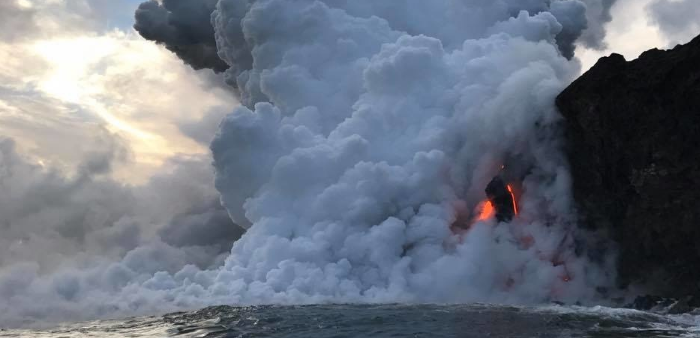The US Coast Guard announced that it is enforcing a Lava Entry Safety Zone for the navigable waters surrounding the Kilauea Volcano active lava flow entries into the Pacific Ocean, on the southeast side of the Big Island, Hawai’i, in the vicinity of the Mackenzie State Park Lower Puna region. The enforcement of the Lower Puna safety zone is in effect as of Sunday, 20 May, at 8 a.m.
Lt. Cmdr. John Bannon, Coast Guard Sector Honolulu waterways management lead, informed:
For mariners without prior limited entry approval, the safety zone encompasses all waters extending 300 meters (984 feet) in all directions around the entry of the lava flow into the ocean. All waterway users should be aware of the hazardous conditions associated with such an event. Getting too close to the lava can result in serious injury or death.
As long as lava enters the ocean, hazardous conditions are likely to occur with little to no warning and cannot be predicted. According to Hawai’i Civil Defense, lava entering the ocean produces laze, which is formed when hot lava hits the ocean sending hydrochloric acid and steam with fine glass particles into the air. Laze health hazards include lung, eye and skin irritation.
In addition, ground deformation, seismic activity, newly formed lava delta or existing cliff collapses are all coastal hazards, including the potential for localized tsunamis along the coastline and out to sea.
Based on a review of nearly 30 years of lava and ejection distance observations in the Hawaii Volcano Observatory records, a radius of 300 meters was determined as a reasonable minimum high hazard zone around a point of ocean entry.

































































